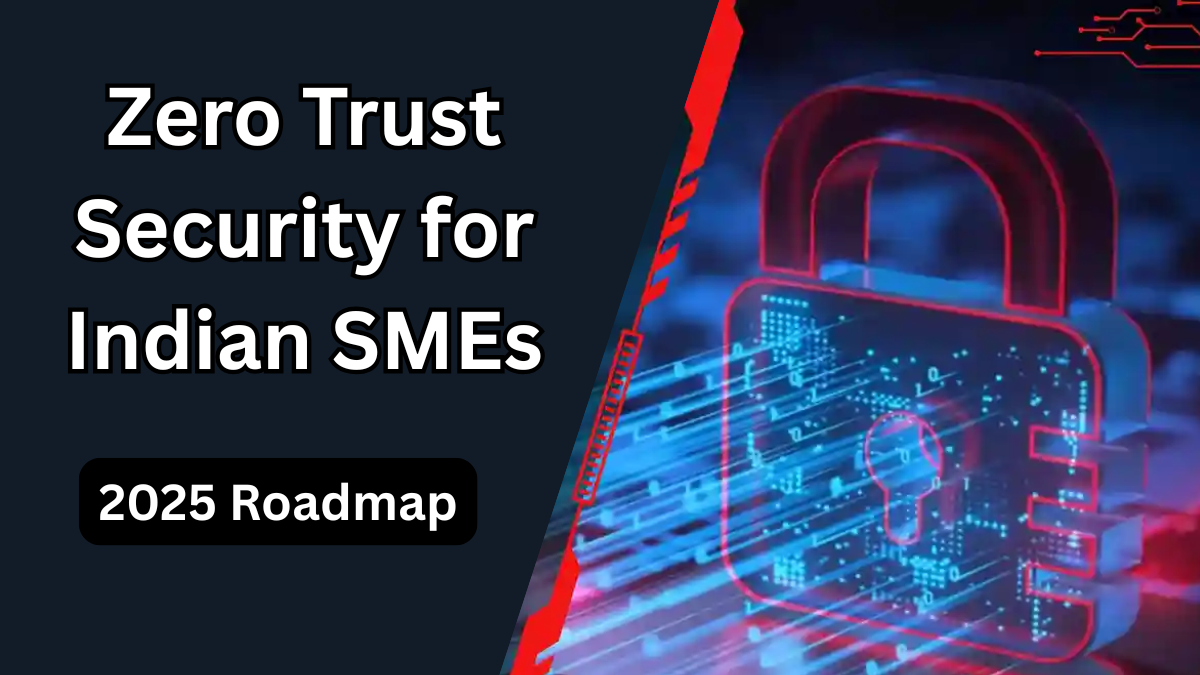In today’s digital-first world, Indian SMEs are no longer just competing on product quality or service efficiency; they are also facing the rising challenge of cyber threats. With hackers becoming more sophisticated and data breaches more frequent, adopting Zero Trust Security 2025 is no longer optional—it’s essential.
This Security Roadmap lays out how small and medium businesses in India can safeguard their future while staying competitive in a digital economy.

Why Zero Trust Security Matters for Indian SMEs
Traditional cybersecurity models worked on the idea of a trusted internal network. But times have changed. Remote work, cloud adoption, and constant cyberattacks mean trust cannot be assumed anymore.
For Indian SMEs, Zero Trust provides:
-
Continuous verification – Never trust, always verify
-
Least-privilege access – Employees only get the access they need
-
Data protection – Sensitive business and customer data remains secure
-
Scalability – Easily adaptable as businesses grow
Key Pillars of Zero Trust Security 2025
The Security Roadmap should include:
| Pillar | What It Means | Why It Matters for SMEs |
|---|---|---|
| Identity & Access | Verify every user, device, and login | Prevents unauthorized access |
| Least Privilege | Give minimum required access | Reduces insider threats |
| Network Segmentation | Divide and protect systems | Stops threats from spreading |
| Continuous Monitoring | Track anomalies 24/7 | Detects suspicious activity early |
| Cloud & Data Security | Secure apps and sensitive data | Keeps business-critical info safe |
Challenges for Indian SMEs in 2025
Common hurdles include:
-
Budget constraints – Limited IT security budgets
-
Awareness gaps – Business owners may not fully understand the need for advanced cybersecurity
-
Technology overload – Difficulty in choosing the right tools and partners
-
Compliance pressure – Following new data protection laws in India
The Security Roadmap for SMEs in 2025
Steps to adopt Zero Trust Security 2025:
-
Assess vulnerabilities – Identify weak points in your system
-
Secure user identities – Enable multi-factor authentication (MFA)
-
Adopt least-privilege access – Limit permissions
-
Protect critical data – Encrypt files and secure cloud apps
-
Invest in monitoring tools – Use AI-driven threat detection
-
Educate employees – Conduct regular cybersecurity training
-
Review & update – Continuously improve the security roadmap
Benefits of Zero Trust Security for Indian SMEs
Key advantages include:
-
Protection against ransomware and phishing attacks
-
Compliance with India’s evolving data protection regulations
-
Building customer trust by showing a commitment to cybersecurity
-
Long-term cost savings by avoiding data breach expenses
FAQs
Q1. Why is Zero Trust Security 2025 critical for Indian SMEs?
Zero Trust Security ensures continuous verification, reduces insider risks, and protects sensitive data, which is vital for SMEs facing rising cyber threats in 2025.
Q2. Is Zero Trust Security expensive for small businesses?
Not necessarily. While initial setup may require investment, many scalable and affordable solutions are available, making it cost-effective for SMEs in the long run.
Q3. How can Indian SMEs start their Security Roadmap?
They should begin with risk assessment, securing user identities, adopting least-privilege policies, and gradually implementing monitoring and data protection tools.
Q4. Does Zero Trust work for SMEs using cloud platforms?
Yes. In fact, it’s essential—Zero Trust adds layers of protection for cloud apps, ensuring secure access and preventing data leaks.
Click here to learn more
